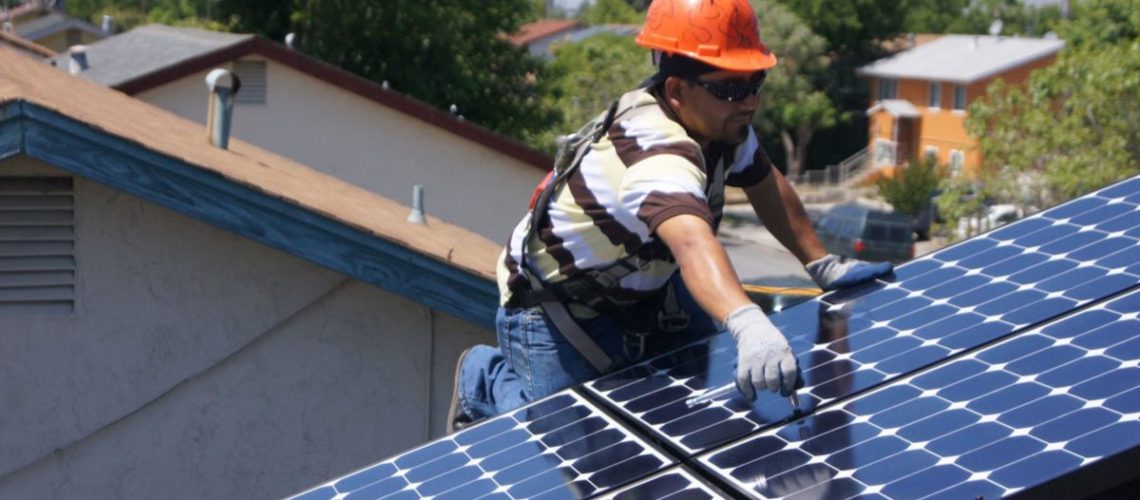Cutting project timelines and costs, automated permits support a more rapid buildout of clean energy.
California has passed SB 379, the Solar Access Act, which will require cities and counties to adopt automated solar permitting systems. The act is expected to lead to shortened project times and lower permit costs for residential solar.
The law is a welcome change to rooftop solar installers and customers, who rely on short project timelines for a positive customer experience. Projects with a nameplate capacity of 38.4 kW and below are eligible for automated permitting.
The bill states that to reach its clean energy goals, California may need to deploy up to 6 GW of new renewable energy and storage resources annually.
“This bill will help cities and counties go big on solar by cutting permitting costs and wait times. With solar permitting legislation passed, it’s exciting that more Californians can now tap into this abundant energy source,” said Steven King, clean energy advocate, Environment California.
“California’s substantial network of rooftop solar and battery storage helped avoid rolling blackouts during the latest heat wave’s peak. Now these technologies will be even easier for consumers to get their hands on. We need to do all we can to eliminate barriers to further adoption of solar and storage,” said King.
The law is also aimed at reducing permitting costs, which represent part of the acute problem of soft costs in the U.S. rooftop solar market.
A soft cost is anything not directly related to the construction of the system, and includes such items as design, fees, sales costs, taxes, and insurance. Shawn Rumery, senior director of research at SEIA, said soft costs represent 60-70% of total residential solar costs, and 50 to 60% of total commercial solar costs. Since 2014, residential system costs have come down roughly 25%, but soft costs have dropped only 15%, said SEIA.
The Department of Energy has been working to tackle this issue nationwide by developing and testing the SolarAPP+ automated permitting tool. SolarApp+ can handle about 90% of solar permits in most jurisdictions, tackling simpler projects, and freeing up time for jurisdictions to focus on more complex building permits that are already clogging their pipelines.
The California law states, “Because the 2021 budget included a $20 million appropriation to the Energy Commission for grants to all jurisdictions that adopt the SolarAPP+ or a similar program in order to expedite permitting, local permitting jurisdictions can and should be required to adopt SolarAPP+ or a similar program for automated permitting in order to promote the development of solar and storage to help meet the state’s clean energy needs.”
The law exempts cities with populations of fewer than 5,000 and counties with populations of fewer than 150,000, including each city within that county. Cities with a population of 50,000 or fewer must satisfy the law’s requirements by September 30, 2024, while cities, counties, and cities and counties with populations greater than 50,000 are required to satisfy the requirements by September 30, 2023.
This July, California launched an incentive program for cities to adopt SolarAPP+. The program, called CalAPP, provides grants and assistance to cover the staff time and other resources spent on adoption. The maximum grant sizes range between $40,000 and $100,000 depending on population. The grants are non-competitive and the application is simple.
“CalAPP is a quadruple win,” said Jeanine Cotter, president and CEO of Luminalt, a solar installation company in the Bay Area. “Everyday, we devote a ton of resources to obtaining permits for our clients to go solar. By encouraging cities to adopt the best practice of automating permitting, CalAPP will slash costs for building departments, installers, and customers, leading to solar on more roofs, which in turn will reduce global warming emissions.”
SB 379 was co-sponsored by Environment California and SPUR, introduced by Sen. Scott Wiener and co-authored by Assemblymember Al Muratsuchi. It was signed into law by Governor Gavin Newsom. Full text of the law can be found here.
“As record-breaking heat waves tax the state’s electric grid, transitioning away from fossil fuels towards renewable energy has never been more urgent,” said King. “Signing SB 379 into law marks an important step in expanding access to clean, renewable solar energy throughout California.”



